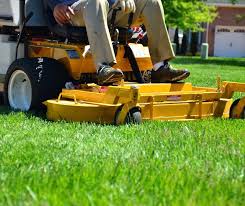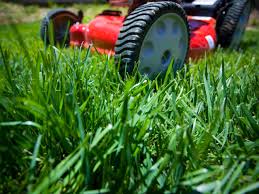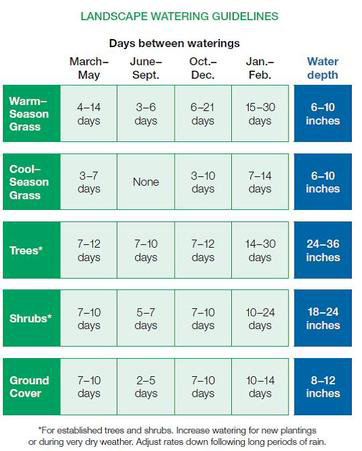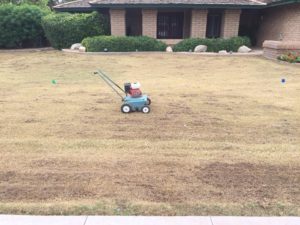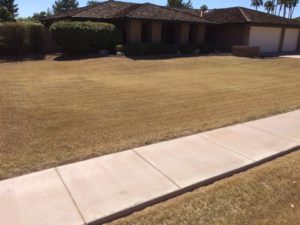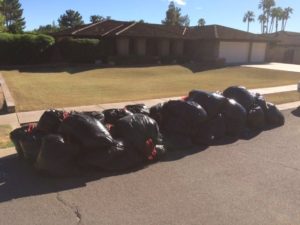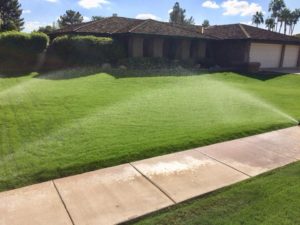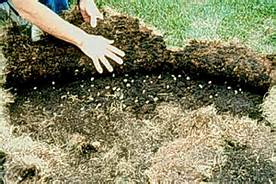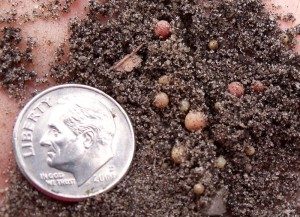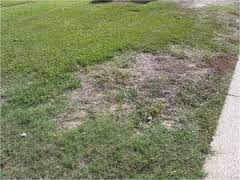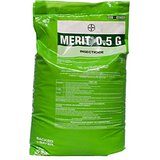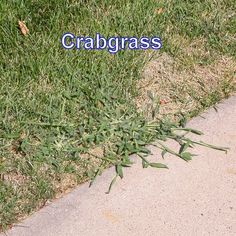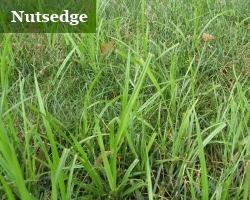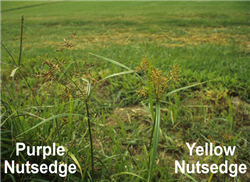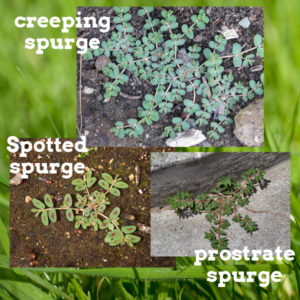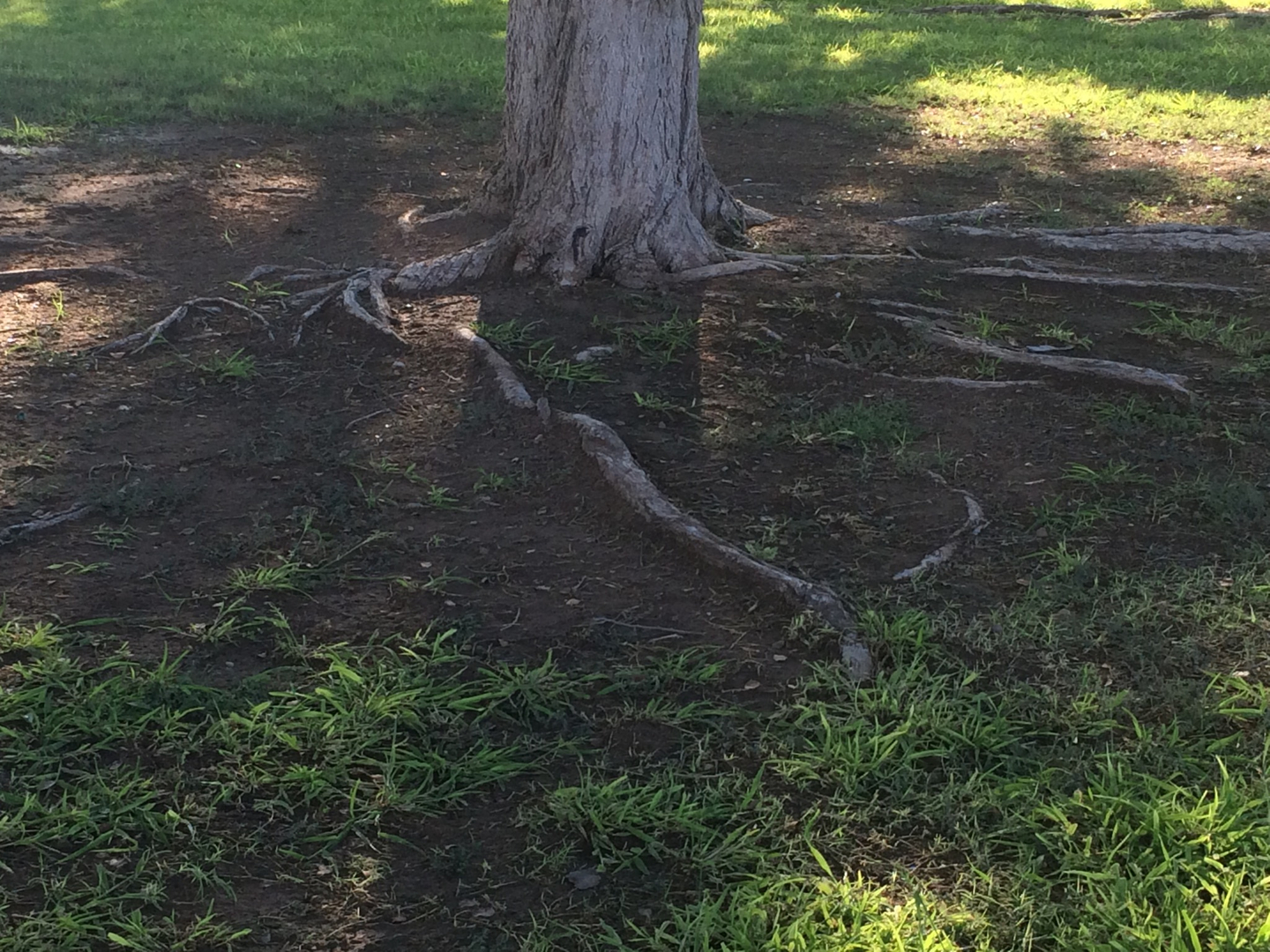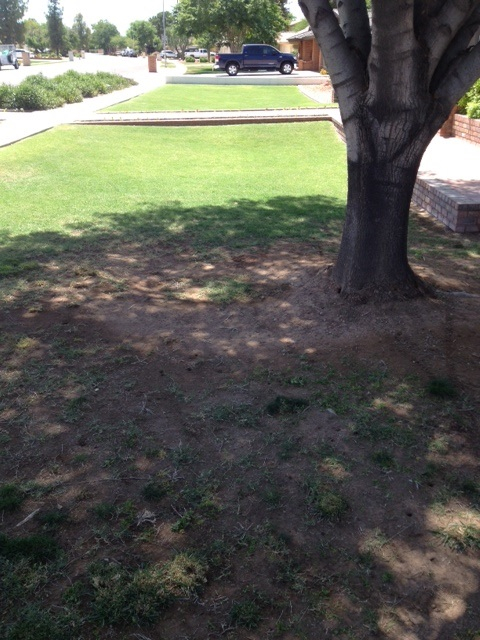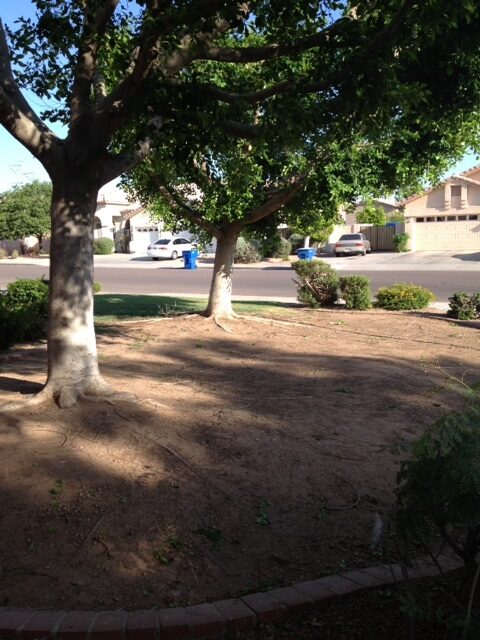Mowing Tips
- Never mow wet grass. It mows unevenly, and the clippings clog the mower.
- Vary your mowing pattern. Mowing in the same pattern tends to compact the soil.
- Mow grass on a regular basis. Bermuda hybrids need to be mowed on a weekly basis at a height of 1/2" - 2".
- Winter Ryegrass and Tall Fescue blends can be mowed at higher settings - 2.0" - 3.0".
- Do not remove more than 1/3 of the grass blade during mowing cycles.
- Bag your clippings. Mulching mowers can spread weed and disease infestation.
Watering Tips
Lawns should be watered deeply to a soil depth of 6-10 inches and as infrequently as possible. Running your sprinklers for a few minutes every day is the worst way to water a lawn. Roots will grow only where there is water, so if you consistently wet only the top few inches of soil, the roots will not venture any deeper. Eventually, the shallow root development forces you into watering more often and that means trouble, because frequent watering keeps the surface wet, which is ideal for disease and insect development. If roots go deep into the soil, they can draw on a larger underground water area and the lawn can go much longer between watering cycles. The Golden Rule - DO NOT WATER EVERYDAY!!!
Water Saving Tips:
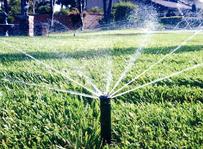
- Water early in the morning to maximize water pressure to your sprinklers and reduce evaporation.
- Deep soak to a soil depth of 6-10 inches.
- Set sprinkler zones for 20-30 minute cycles.
- Gear- drive rotors and rotary nozzles - 50-60 minute cycles.
- Water Summer Bermuda lawns 2-3 times per week.
- Winter ryegrass 1-2 times per week.
DON'T WATER EVERY DAY! - Go easy on the fertilizer. Excessive nitrogen causes fast growth and increases water requirements.
- Apply fertilizer every 4-5 weeks.Spot spray weeds to eliminate them from competing with grass for water.
Signs of under-watering:
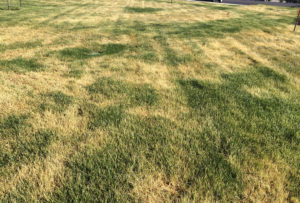
- Grass turns bluish-grey and doesn't spring back after you step on it.
- Soil is too hard to push a screwdriver into.
- Brown spots and soil cracking is visible.
Signs of over-watering:
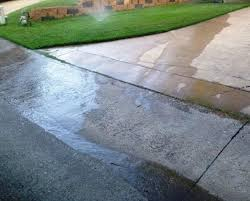
- Grass has a musty odor and is extremely soft.
- Mushrooms and excessive weeds are present.
- Puddling and run-off is common.
STOP WASTING WATER AND START SAVING $$$
Winter Lawn Installation
Preparing your lawn for Over-seeding:
- On September 1, reduce lawn watering cycles and duration by 50%.
- Turn off ALL lawn watering zones at least 2 weeks prior to over-seeding. Optimum period to install a winter lawn is late September thru October.
- Lower your mowing height by 50% to slow the Bermuda grass growth and prepare for dethatching/scalping. This encourages early dormancy so the summer Bermuda grass will not compete with winter perennial rye grass.
- DO NOT APPLY LAWN FERTILIZER IN SEPTEMBER.
- Inspect and adjust your irrigation system to insure that all components are fully operational. This will provide optimal water spray uniformity and increase seed germination.
Installing a Winter Lawn (Over-seeding):
- Dethatch to remove thatch build-up and scalp to a height of 1/2"-3/4".
- Core Aerate if soil is compacted and apply soil amendments. This increases seed germination and reduces water puddling/run-off.
- Apply a Lawn Starter Fertilizer at recommended rates.
- Apply perennial rye grass seed at a rate of 10-15 lbs. per 1000 sq./ft.
- Spread seed with multiple passes in opposite directions.
- Gently rake seed into the soil and cover with a topper if desired. This is an optional step and might be necessary in cooler temps.
- NOTE: It is not necessary to use steer manure. Avoid the smell and mess. Lawn Starter Fertilizer is much more effective.
- Set watering cycles for 4-6 daily start times at short intervals. The goal is to not let the seeds dry out until seeds have germinated with 1-2" of new growth.
- After 2-3 weeks and 3"+ of new growth, reduce watering to once a day in the early morning hours after the first mow.
- After 4 weeks, water 1-2 times a week to a depth of 4-6".
- Winter lawns require 1-1.5" of water per week during the winter months. DO NOT WATER EVERY DAY!
- Mow weekly and do not remove more than 1/3 of the grass blade.
- Winter grass requires fertilization, just like summer Bermuda lawns. Fertilize every 4-6 weeks with an all-purpose fertilizer blend like Scotts Turf Builder, Green Max, Turf Supreme, or an organic lawn fertilizer.
Spring Lawn Transition
SPRING LAWN TRANSITION
(Over-seeded Ryegrass to Summer Bermuda grass)
When daytime temperatures consistently creep into the 80-90’s (March-May), it’s time to transition. A key indicator is when our nighttime lows are in the 60's. The winter ryegrass will begin to change color and wilt. DO NOT INCREASE WATER!
Here’s how to transition:
- Lower your mowing height to GRADUALLY remove approximately 50% of the leaf blade. Over a period of 2-3 weeks, lower the mowing height every week until 3/4” height is achieved.
- Do NOT scalp and turn off the water to kill the ryegrass.
Reduce watering for 7-14 days. Don’t stop watering completely because the Bermuda grass root system still needs water. If you’re watering every 2-3 days, cut back to every 3-4 days deep soaking to a depth of 4”-6”. The objective is to discourage ryegrass growth and encourage the Bermuda grass to come out of dormancy. - DO NOT INCREASE WATERING. This will prolong the ryegrass and leave a weak strain of Bermuda grass after the winter ryegrass has died.
- THE #1 TRANSITION PROBLEM IS ALWAYS OVER-WATERING!
- Fertilize with a high nitrogen based blend like Scotts Turf Builder or Turf Royale.
- Perform CORE AERATION to increase the necessary heat to the Bermuda grass root zone and encourage the Bermuda grass to come out of dormancy.
- Applying fertilizer, pelletized gypsum, and humate soil conditioner following core aeration will prepare your lawn for heat and disease tolerance.
- Mow on a weekly basis to a height of 3/4” - 1 1/2”. Don’t remove more than 1/3 of the grass blade.Deep soak your lawn to a depth of 6” every 2-3 days by applying .60” - .70” during each watering cycle.
Non Over-seeded (Dormant Bermuda grass)
- Begin by lowering your mowing height only enough to remove the first 1/3 of the grass blade. Avoid scalping to allow the remaining grass blades to absorb sunlight and nutrients.
- Rake or dethatch with a power rake to remove any dead grass or thatch that may hinder the sunlight from reaching the new plant growth.
- Perform CORE AERATION to increase the necessary heat to the Bermuda grass root zone and encourage the Bermuda grass to come out of dormancy.
- Higher temperatures (80's to 90's) and sunlight are key components to a smooth and effective transition.
- Applying fertilizer, pelletized gypsum, and humate soil conditioner following core aeration will prepare your lawn for heat and disease tolerance.
- Fertilize with a balanced blend lawn fertilizer with a 21-7-14 or 16-8-4 N-P-K ratio every 4-5 weeks.
- DEEP SOAK YOUR LAWN AREAS TO DEPTH OF 6" TWICE PER WEEK. Deeper watering will encourage the root system to flourish and bring your Bermuda grass out of dormancy.
Lawn Pests & Problems
Just because our climate is hot and dry, we are not immune to lawn insect and weed problems. Bermuda grass is a sun-loving heat tolerant grass that is prone to insect infestation. The most common insects that attack Bermuda lawns are ants, grubs, web worms, and PEARL SCALE. The photos below are pearl scale and grub infestations. Pearl scale or ground pearls, is like termites for grass. They attack the root systems 10-16" below the sod line. This makes it difficult to treat. The damage begins in late spring and continues through the fall. The early warning signs are dry/dead spots that look like poorly irrigated areas in the lawn. The pearl scale insects are feeding on the roots causing the Bermuda grass to lose moisture and eventually die. The dead areas will appear in circular patterns and are usually followed by weeds. You'll also notice white pearls and white crystals on the top of the infected area. Pearl scale insects only attack hybrid Bermuda grass varieties - tiff, tiffway, Santa Ana, mid-iron, e-z turf, BOB sod, etc.
How to treat and control Pearl Scale:
There are no chemical treatments that will completely kill pearl scale in lawns. Your best strategy is to treat the infected areas early with a product called Merit. (Imidaclopid) This can be purchased at your local nursery or irrigation supply branch. Merit only stops the infestation. Pearl scale insects are very resilient and can remain in the soil for months. Consult your local nursery for proper insect control treatments. Apply the recommended insecticides at the correct times and rates. The best defense against any insect infestation is a strong healthy lawn that is fertilized regularly and watered properly.
Lawn Weed Infestation
Weed infestation is usually a sign of over-watering. Lawns that are deep soaked to a depth of 6-12" on an infrequent (every 2-3 days) basis will be more resilient to contracting weeds. The most common weeds found in Bermuda grass are: crabgrass, nut sedge (nut grass), and spurge. Crabgrass and nut sedge can be very invasive and difficult to kill. Both weeds spread rapidly in the summer heat and humidity. It's best to apply a pre-emergent weed treatment in the early spring (January-February) before the weed seeds germinate. Crabgrass and nut sedge top-kill weed herbicides can be purchased at home centers, nurseries, and your local irrigation/landscape products distributor. Most pest control companies offer weed spraying and pre-emergent applications at the appropriate times throughout the growing season. The big advantage of using a licensed spray applicator is that they have access to commercial strength chemicals not available to the general public. In most cases, it will always be cost effective to call a pest control company to treat your weeds. They guarantee the treatments and will come back to treat problem areas throughout the year.
Shade and Bermuda Grass
Summer Bermuda grass is a heat-tolerant sun-loving grass. It's the only grass species that can survive Arizona's extreme summer temperatures. However, Bermuda grass blends requires 8+ hours of full sun. If you have shade trees in or around your grass areas, Bermuda grass will struggle. Additionally, air flow under trees is restricted, increasing humidity and disease pressure. Trees also suck the water and nutrients out of the grass areas. They will soon develop surface roots that can damage landscape borders, sidewalks, patios, swimming pools/spas, and house foundations. Trees and Bermuda grass are a bad mix. Cool season grasses (perennial/annual rye grass, fescue, and Kentucky bluegrass) can tolerate shade and have little problems growing during the winter.
Before struggling to maintain turf grass underneath trees, evaluate the need for grass in that area. If removing trees is not an option, a better choice might be synthetic artificial grass or desert landscaping.
Though all turf grasses perform better in full sun than in the shade, some grass species perform adequately in the shade. Consider using the following mixes for shady areas:
- 100% Tall Fescue. This blend is somewhat heat tolerant and will survive longer into the summer months in shade. However, it requires more watering and could die in the extreme heat months - June thru August. Fescue grass is the grass of choice in Southern California and Las Vegas. However, their summer nighttime temps are cooler than the Phoenix area. When our nighttime temps are in the mid 90's, cool season grass blends are under extreme stress.
- 50% Fescue with 50% Kentucky Bluegrass. Another heat and shade tolerant blend. A finer blade texture and Kentucky Bluegrass is the most shade tolerant blend.
Here's a few maintenance steps to improve growing grass in the shade:
- Aggressively prune and thin trees to allow better penetration of sunlight and increase air flow.
- Mow shaded areas underneath trees at a minimum of 2.5", but preferably 3-3.5" to leave the maximum leaf area for photosynthesis.
- Irrigate only as needed to prevent grass from becoming drought stressed. Deep and infrequent irrigation is preferred over shallow, frequent cycles.

